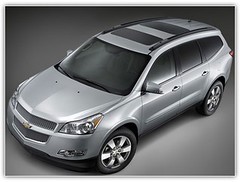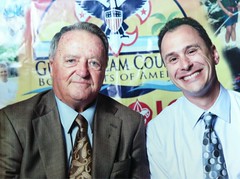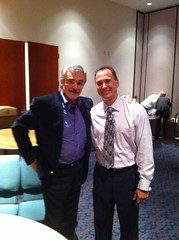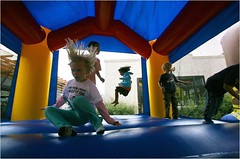Reprinted with Permission from Safety Record Blog, Copyright Safety Research Stategies, 2010
On December 27, 2008, the strangulation death of Noah Thompson by a Tots In Mind crib tent became the first to be investigated by the U.S. Consumer Product Safety Commission involving this unregulated product. Eighteen months later, in July, the commission and the manufacturer finally announced a recall featuring a repair remedy for the attachment clips.
The Thompson case underscores two continuing weaknesses in the regulatory framework meant to ensure the safety of juvenile products: long gaps between the time when a product is deemed hazardous and a recall, and the difficulty in dealing with baby products that fall outside of the CPSC regulations and are not manufactured to any voluntary or mandatory standard.
The CPSC says that the Tots In Mind recall may only be the first action it takes to protect toddlers from the design deficiencies of crib tents.
“CPSC’s Safe Sleep team is reviewing incidents with crib tents to determine the best approach to take with this product class to ensure the safety of young children,” says Scott Wolfson, the CPSC’s Director of its Office of Information and Public Affairs.
In the meantime, Crib Tents continue to be manufactured without regard to established safety standards and marketed under the presumption that they are safe to use with vulnerable populations in situations where adults are absent.
Safety Research & Strategies, which investigated the safety of cribs tents after a Virginia toddler suffered a lifelong brain injury caused by a crib-tent strangulation, turned its findings over to the CPSC. SRS President Sean Kane doesn’t believe that the recall goes far enough.
“We understand that the CPSC is restricted by their regulations in pressing the recall of an unregulated product, but the reality is that there are inherent problems with the design that are not being addressed by the recall.”
The Long Road to a Recall
Thompson was only two years old when he attempted to climb out of a play yard covered by a crib tent – a mesh-covered dome placed over a crib or a play yard to prevent toddlers from climbing out. These mesh domes are affixed to the play yard base with plastic clips. Those intended for use in a crib are all-in-one units that sit inside the crib and attach to the crib’s side rails with a hook and loop system. Parents can place or remove their toddlers in or from the enclosure via a zippered side.
According to the CPSC, Thompson was found “hanging with his neck entrapped between the play yard frame and the metal base rod of the tent that had been partially tied by pieces of nylon rope and partially attached by clips.” The Thompsons had improvised the nylon ties, because “the child was able to pop off the clips,” the CPSC said.
The commission said that it was aware of three other incidents in which children were “able to remove one or more clips and place their necks between the tent and the playard,” but were freed without incident.
The July 15 announcement recalled 20,000 Cozy Indoor Outdoor Portable Playard Tents Plus Cabana Kits, manufactured by Tots In Mind of Salem, N.H., the only U.S. manufacturer of crib tents. The remedy was free replacement clips supplied by Tots In Mind. While Thompson’s death was amply reported by the print and broadcast media, the recall received little coverage.
The year-and-a-half lag between the Thompson death and the recall occurred because the commission was not satisfied with the company’s first proposals for corrective action.
“There were numerous proposals by the company which CPSC staff did not accept due to the concern of the safety of a child being at risk with the proposed corrective action,” Wolfson said “We had to be sure new clipping system addressed the concerns that we had. Repair kits must be submitted to the CPSC, where they are reviewed and approved by CPSC engineers.”
Lengthy investigations and negotiations with the manufacturer– conducted out of the public purview by law – is a continuing source of frustration for safety advocates says Nancy Cowles, executive director of Kids in Danger.
“The CPSC is always pushing to get the company to agree to do a recall, and that’s part of the reason why I think they take so long,” Cowles said. “Also, so much of what the commission does is secret, so we don’t know at what point they had all the information to do a recall.”
The CPSC has other ways to alert the public about dangerous child products, says Don Mays of Consumers Union. He pointed to the commission’s recent move to get out ahead of a March recall on the Infantino Sling Rider and Wendy Bellissimo baby slings.
“There was one product responsible for three infant fatalities, but while negotiating the recall, the CPSC issued a public warning about slings and putting infants in slings, and that put the warning shot out there, instead of waiting for the remedy to be developed. I would like to see more of that, especially if they can’t fast-track a recall.”
The Problem with Crib Tents and Other Unregulated Baby Products
The greater challenge will be addressing the more general hazards associated with crib tents. Like many juvenile products, the crib tent was invented to address a specific problem that may be short-lived, but is very frustrating to parents. Caregivers may regard a crib tent as something that will prevent a fall, while ignorant of the suffocation and strangulation hazards it presents.
About a year before Thompson’s death, another toddler, Nicholas Blanco, suffered a severe and permanent brain injury when he became entrapped and strangled by a Cozy Crib Tent. On October 5, 2007, Blanco was in the crib when one of the fiberglass rods supporting the dome type cover broke and fell into the crib, pinning the boy between the support rod and the side of the crib. His mother discovered her son hanging on the outside of the crib with his neck stuck under the rod of the crib tent.
During the course of its investigation, SRS found stories of an unconfirmed death and other potential tragedies involving crib tents. Parents described the mesh tearing at the seams or at other points or the entire structure collapsing – either pulled down by the toddler or inverting under the weight of a pet. In some cases, the parent discovered the child entangled and was able to free it before an injury occurred.
SRS not only shared these complaints with the CPSC, and wrote and wrote an article on the dangers of crib tents (see Crib Tents: Another Hazard from the World of Unregulated Child Products)
The July recall does not address these hazards and Mays says that juvenile products add-ons – such as crib tents – present “all sorts of compatibility products not foreseen by the manufacturers – it might not fit all units.”
“And when that happens, a child’s safety is at risk. If you talk about sleep environments, it becomes particularly risky,” he says.
Cowles of Kids in Danger had more specific concerns:
“My problem with this recall is that they are saying it’s a safe product and it’s not,” she says. “The commission only counts the incident involving the play yard tent. They have other reported breakages with the crib tents. This recall doesn’t say how many parents complained to Tots in Mind and how many products failed.”
Crib Safety and the CPSC
This year, the CPS began rulemaking on new mandatory standards on cribs that could include provisions covering drop side hardware, mattresses, loose and fragile components, such as crib slats. The new rule may effective ban one of the most common designs: drop-side cribs. The proposal was developed by the commission’s Safe Sleep Team, in conjunction with juvenile products manufacturers and ASTM International, the manufacturing standards-setting body, after studying infant incident and injury data.
CPSC’s Safe Sleep team is also charged with coordinating all crib recalls, developing consumer education on product registration and safe sleep practices.
At last month’s CPSC meeting on Agenda and Priorities in fiscal year 2010, Ami Gadhia, on behalf of Consumers Union, Kids in Danger and the Consumer Federation of America, urged the commission to extend their safe sleep effort to other products such as crib tents, sleep positioners, and infant comforters and pillows.
“We are aware of deaths associated with each of these products, some of which have been recalled due to the hazard they pose to infants,” she said.
Crib tents currently are outside the express outlines of the Consumer Product Safety Improvement Act of 2008, which requires the establishment of standards and certificates of compliance for durable juvenile products that fall into 12 categories: cribs; toddler beds; high chairs, booster chairs, and hook-on chairs; bath seats; gates and other enclosures for confining a child; play yards; stationary activity centers; infant carriers; strollers; walkers; swings; and bassinets and cradles.
But, says Wolfson:
“The staff at the agency is considering another dozen juvenile products to turn into mandatory standards. We have not ruled out that this could be a product we might consider under section 104 of the Act.”
-- for more information on this story you can contact Safety Research & Strategies, 340 Anawan St., Rehoboth, MA 02769 (508) 252-2333
Spencer T. Kuvin
Cohen & Kuvin, LLC
http://www.cohenkuvin.com/
stk@cohenkuvin.com





 West Wing Report (@WestWingReport)
West Wing Report (@WestWingReport)